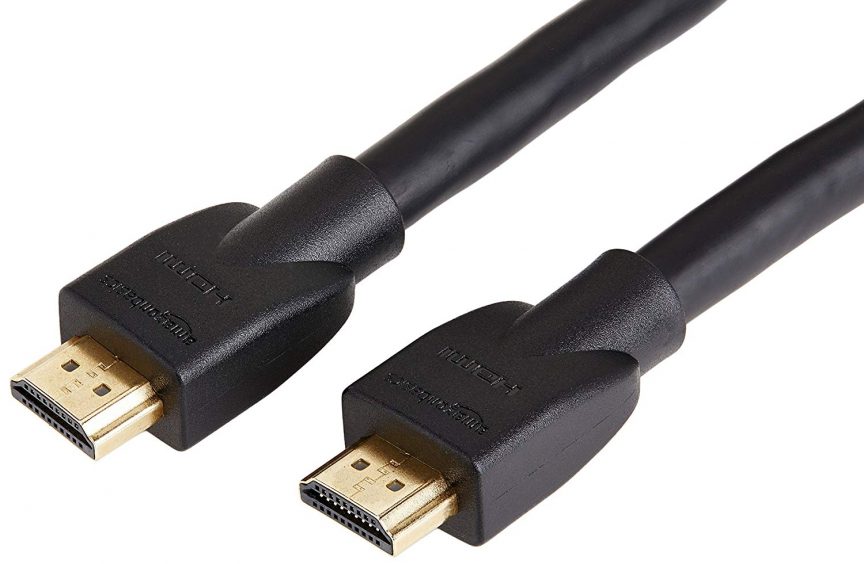For the uninitiated, obtaining a best buy HDMI cable is no simple matter, the selection, scope and price range is enough to make the average person’s head spin.
The good news is that obtaining a good HDMI cable which fully supports your equipment features is not difficult if you know what to look. Most of the information available on the subject is just noise, distinguishing the signal isn’t really that hard at all if you follow these simple guidelines.
A high-definition multimedia interface (HDMI) cable is a compact audio-video cable used to transfer data from a source device, such as a Blu-ray player, to a display device, such as an HDTV. HDMI was introduced in 2002 and soon became the de facto standard for delivering high-definition content to our televisions.
Genuine HDMI
HDMI is controlled by the HDMI Forum, a collection of industry entities, such as Philips and Sony. To display the genuine HDMI logo, it must meet technical specifications and quality control standards as set by the Forum. Cheap (knockoff) non-genuine cables should be avoided, but are rare these days due to the prevalence of Inexpensive Genuine HDMI Cables.
HDMI Versions
Perhaps the most confusing aspect of choosing HDMI cables is making head or tail of the various versions available. The version of the cable refers to the version of the HDMI standard that it supports. The first version was 1.0, but the Forum has upgraded it to 1.2, 1.3 and then 1.4. The Forum is currently working on version 2.0. All HDMI versions are backwards compatible, however, so there is never any risk of purchasing a cable that won’t work with your devices.
HDMI Features over Version
It is possible, however, to purchase a cable that doesn’t support certain features. Full 3D HDMI Cables, for instance, were not implemented until version 1.4, so a 1.3-version cable would limit display to side-by-side mode, if it were available.
One way to avoid unsupported features is simply to buy the latest version available, and since the difference in price on basic cables is not much, this isn’t a bad approach.It also ensures future proofing, at least until new standards arrive.
An alternative to this approach is to choose HDMI cables based on the features needed, such as 1080p support or 3D support, Ethernet connectivity etc.
HDMI Cable Types
There are two main types of HDMI cables: category 1 and 2. HDMI Standard, which is Category 1, is designed to support up to 1080i, including 720p. HDMI High Speed, which is Category 2 is designed to support up to the upcoming 4K resolution, including 1080p.
The two variants include Ethernet support: HDMI Standard with Ethernet and HDMI High Speed with Ethernet. As a rule of thumb, most people will want to buy HDMI High Speed and only HDMI High Speed with Ethernet if they know they need Ethernet connectivity.
HDMI Connections
HDMI connectors range from Type A to E. For most users, their best buy HDMI cable will have a Type A connector, which is the larger size used on most HDTVs. Type C is the HDMI Mini Connector, and Type D, both of which are used on some devices, such as tablets.
For tight installations Right Angled HDMI Connectors are available to enable cable connection without bending cables too much.
Best Buy HDMI Cable – Basic vs. Premium Cables
Perhaps the most common question related to HDMI cables is whether the premium brands are worth it. For a standard six-foot cable like a Basic HDMI Cable (Which supports 1080p, 3D, Ethernet), prices can range from a couple of dollars to $100. As a basic rule, the premium brands are not worth it. Unlike an analog connection, a digital connection either is or isn’t. Some cable manufacturers do use lower-quality materials and craftsmanship, but if the cable works, it works.
Cheap HDMI Cables & Quality Control
Something to keep in mind is that the biggest difference between a cheap and a brand-name cable is the level of quality control. Cheap cables are more likely not to work out of the box, but if they work, they’ll be fine for the long run. If you’re buying cheap cables online, you may want to buy several, so if you have to send something back, you at least make it likely that you’ll have one that works.
Distance: The Exception to the Rule
If you’re using an HDMI cable that is longer than 10 feet, then the potential for signal degradation and magnetic interference does become an issue. In these scenarios, it is worthwhile to pay for a premium brand – such as Monster HDMI Cable – that uses high-quality insulation.

